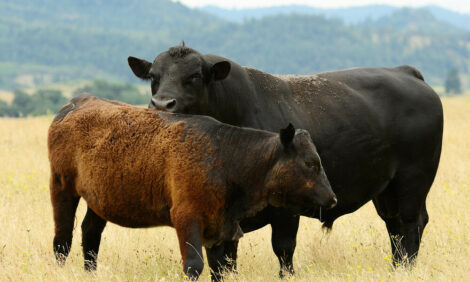



Buffel Grass: How to Rejuvenate Unproductive Swards
AUSTRALIA - Scientists in Queenland are striving to find a solution to the degeneration of the buffel grass pasture.
Buffel grass is considered one of the most valuable introduced species to Queensland livestock producers because it's drought tolerant, shoots quickly after rain and is highly nutritious to livestock, according to ABC Rural
.
It's been widely established across southern and central parts of the state but now landholders are finding the productivity of their older established plants are falling.
Pasture scientist with the Queensland Department of Agriculture, Gavin Peck has been doing a study into how the plant could be rejuvenated.
He says the productivity of buffel grass declines over time as available soil nitrogen is tied up in organic matter.
"A lot of graziers notice a reduction in productivity within five years or so, but it doesn't become apparent on fertile soils for 10 to 20 years.
"The reduction can be as much as 50 per cent in pasture production and animal performance also goes down.
"In trials where stocking rates were kept the same, then animal liveweight gain has been seen to be reduced by half (due to the halving and feed availability and feed quality)."
Buffel grass was thought to have been introduced by Afghani cameleers in the 19th Century as their pack saddles were stuffed with the seed.
To ensure it remains a valuable pasture, Gavin Peck says there are three options landholders could do to regenerate buffel grass.
"There are basically three options: you either accept the rundown and manage around it by supplementing livestock or clearing another paddock or buying another property.
"The second option is to increase nitrogen cycling by pasture renovation or cultivation; and the third option is to increase nitrogen inputs through fertilizer or legumes."
The viability of each of the options differs across the state, but for the drier and less productive grazing lands of western Queensland the options are very limited.
Gavin Peck says in his research, legumes provided the best long term economic returns.
He says some new species are being developed at the moment that may be suitable.
"There are some promising Desmanthas lines of legumes being released for the lower rainfall zones (500 to 600 millimetres ranges).
"For lighter soils Shrubby Stylos (Seca) is still the most promising legumes, but work is being done on finding stylo lines that will survive better in colder climates."
Gavin Peck says scientists at the James Cook University are leading the way with establishing more legume varieties.
TheCattleSite News Desk


